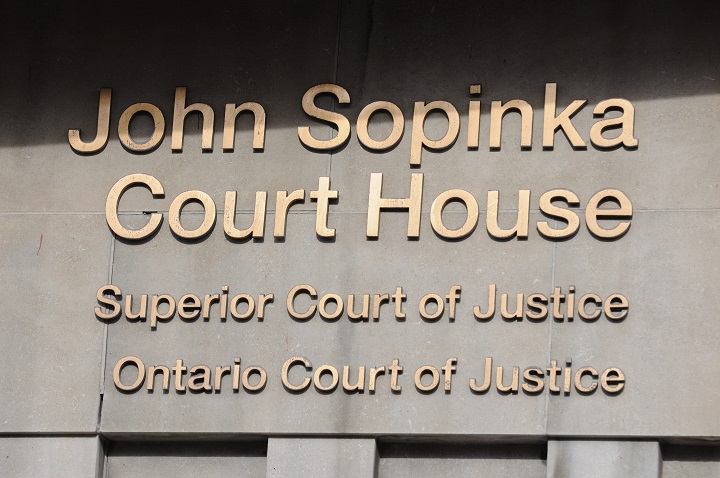HAMILTON – Either one of two shotgun blasts that hit an Indigenous man from within a couple of metres would have killed him, a second-degree murder trial heard on Monday.

However, an experienced forensic pathologist testified, it was not possible to say which of the two shots the homeowner charged in the case fired first.
What was clear, Dr. Allison Edgecombe said, is that Peter Khill, 28, fired both shots downwards at Jon Styres.
“There was certainly a lot of discussion which wound came first, which I was not able to determine,” Edgecombe told prosecutor Steve O’Brien.
“(But) the person with the weapon had to be higher than the person who was shot.”
Court has heard how Khill’s girlfriend alerted him to a possible intruder at about 3 a.m. on Feb. 4, 2016. Khill, who lived in a rural area outside Hamilton, grabbed his Remington 12-gauge shotgun, loaded two shells and went out into the darkness to confront Styres, 29, who was apparently trying to steal Khill’s 15-year-old pickup truck.
“He approached Jonathan, raised his gun, took aim, and at close range pulled the trigger,” prosecutor James Nidal told the court in his opening address. “He racked the pump-action shotgun, chambering another round, and pulled the trigger again.”

Get breaking National news
Khill, who has pleaded not guilty, told responding officers he fired because he thought Styres had a gun and had raised his arms as if to shoot.
The dynamics of the case have prompted comparisons to the highly charged killing of an Indigenous youth in Saskatchewan. In that case, an all-white jury acquitted white farmer Gerald Stanley of murdering Coulten Boushie in August 2016.
Mother of Colten Boushie joins ‘Justice for Our Stolen Children’ camp

Jurors in that case heard that Boushie and friends were on Stanley’s property to ask for help for a flat tire. Stanley testified he thought his ATV was being stolen, fired warning shots, and then accidentally shot the victim in the head.
The Boushie case led to protests against a justice system Indigenous people argued was racist, and First Nations said they were watching the Khill case closely. Relatives and supporters of both Khill and Styres have filled the courtroom most days.
Speaking to autopsy photographs shown to jurors, Edgecombe described in detail the effects of the two blasts, one of which hit Styres squarely in the upper middle of his chest. The other hit him on the outside of the upper right arm, exited through his armpit and re-entered his chest.
Edgecombe said the shotgun – equipped with a “turkey choke” that focused the exiting pellets – was likely somewhere between 1.2 and 2.1 metres from Styres when Khill pulled the trigger.
Both blasts caused extensive damage to the bones, muscles, and vital organs, and either shot would have killed him, although the victim did not die instantly, the pathologist testified.
In cross-examination, defence lawyer Jeffrey Manishen demonstrated various positions that Styres might have been in when hit, leading Edgecombe to concede it was not possible to be definitive about his position.
A second forensic pathologist who reviewed autopsy and other crime-scene data said she agreed with Edgecombe’s findings.
Testifying as the prosecution’s final witness, Dr. Jane Turner said she believed Styres was shot in the chest first, but she, too, was unable to say exactly what position he was in when shot or whether he had been standing, stooped over, or kneeling when hit the second time.
“There was movement in the course of this event,” said Turner, who now works in St. Louis, Mo. “The blast itself could have thrown his body onto his back.”
The case before Superior Court Justice Stephen Glithero continues, with the defence expected to call the first of its witnesses on Tuesday.







Comments